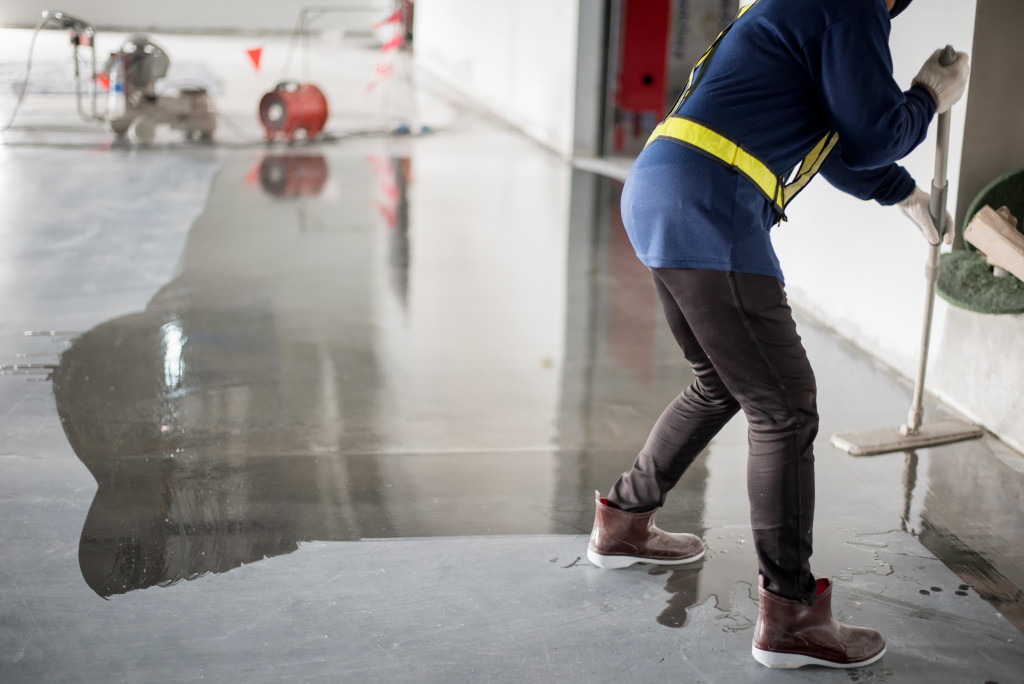A warehouse is a fundamental component of most businesses, as it is where products and materials are stored before they are distributed to customers. Given the importance of warehouses, they must be well-maintained to ensure optimal efficiency and avoid costly repairs.
According to the National Association of Wholesaler-Distributors, the average cost of warehouse repairs is $2.50 per square foot. This means that a warehouse that is 10,000 square feet would cost $25,000 to repair. To avoid these expensive repairs, following some best practices for maintaining your warehouse is important.
Keep reading to learn about the five best practices for maintaining your warehouse.
1. Inspect the Roof and Walls Regularly
The roof and walls of your warehouse are exposed to the elements 24/7, leading to wear and tear over time. Inspect these areas regularly for any signs of damage, such as cracks or leaks, and repair any issues as soon as possible. Doing so will prevent further damage and save you money in the long run.
You should also check the paint on the walls and roof periodically to see if it is peeling or fading. Water damage is one of the most common issues in warehouses, so it is important to ensure that the paint is in good condition to protect the walls and roof from further damage. Hire a professional commercial painting service to repaint the warehouse every few years to keep it in top condition. They will also be able to advise you on the best type of paint to use to protect your warehouse from water damage.
2. Keep the Floors Clean and Dry
Your warehouse floors are subject to a lot of traffic daily, which can eventually lead to wear and tear. To keep your floors in good condition, sweep them regularly and mop them down as needed. It would be best if you also took measures to keep them dry, as moisture can cause damage over time. For example, you might want to invest in floor mats that absorb water or install an automated sprinkler system.
Depending on your flooring type, you might also need to refinish it periodically. For example, concrete floors should be refinished every 5-7 years, while you should refinish wood floors every 3-5 years. Many warehouses also have epoxy flooring, a type of resin that creates a durable and easy-to-clean surface. If you have epoxy flooring, you must have it professionally refinished every 2-3 years.

3. Store Items Properly
For your warehouse to operate efficiently, you must store items properly. This means that items should be clearly labeled and easy to find. Moreover, they should be stored in a way that maximizes space and prevents damage. For example, things that are delicate or prone to breakage should be kept away from high-traffic areas.
Technology can also help you optimize your storage space. For instance, you might want to invest in an inventory management system that lets you track what is in stock and where it is located. This can save you time and money by preventing items from getting lost or misplaced. Train your employees on how to use the system to properly utilize it.
4. Control Pests
Pests can not only cause damage to your inventory but also pose a health hazard to your employees. To keep pests out of your warehouse, conduct regular inspections and seal any cracks or openings. You should also invest in pest control products, such as traps or pesticides, and use them according to the manufacturer’s instructions.
The temperature can also play a role in pest control. For example, you might want to keep your warehouse cooler in the summer to prevent insects from coming inside. Alternatively, you might want to invest in a commercial freezer to keep food items fresh and free of pests. Many warehouses also have a pest control system, such as an ultrasonic device that emits sound waves that deter pests.
5. Implement Safety Procedures
Safety should be a top priority in your warehouse. To ensure the safety of your employees, you should develop and implement safety procedures. You should train your employees to use any equipment they need to do their job properly and stay safe while working.
For example, you might want employees to wear protective gear like gloves or goggles when handling hazardous materials. You should also create a system for reporting accidents and injuries. Taking these precautions can help prevent accidents and keep your employees safe.
Maintaining a warehouse is essential for businesses that rely on this space to store their products and materials. By following these best practices—such as inspecting the roof and walls regularly, keeping the floors clean and dry, storing items properly, controlling pests, and implementing safety procedures—you can extend the lifespan of your warehouse and prevent costly repairs from being necessary down the road.

